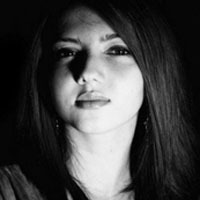In the many important discussions happening these days about the groups who are left unrepresented by mainstream media and culture, it can sometimes be hard to remember that just as Hollywood fixates on whiteness and maleness and straightness, so too it fixates on youth. If characters who are young are allowed to be in transit—still figuring out their lives, still making choices—the image of the elderly that we usually receive is characterized by its fixedness.
For example, Maggie Smith is a brilliant actress and it’s a joy to see her working no matter what her role, but what Smith is usually asked to present is a calcified image of herself. She’s posh, she’s snappy, she’s the Dowager Countess in perpetuity, the unflappable and unchallengeable final self. Our relief in seeing her comes from finding her exactly as we left her. This has been the common fate of aging actors through film history—after a point, films stop asking performers to reveal and just ask them to repeat.
There’s a sense of desperation in the media that is usually produced around older characters—perhaps the stakes are high because it is so difficult to secure funding, true, but the cultural silence that exists around the elderly extends beyond the movies. Thinking about the future is scary for many people, and so we push out of sight anything that reminds us of our fear—and too often what we are pushing to the side is the full humanity of our most senior citizens.
This has been a rich year for cinema, but one of the most unexpected developments has been the flourishing market for films about older characters, and especially older women. Character actresses Lily Tomlin and Blythe Danner released Grandma and I’ll See You In My Dreams, respectively—leading films for the first time in their careers—and Sally Field has a May-December romantic comedy on the way, called My Name Is Doris.
But most spectacularly, there is Andrew Haigh’s 45 Years, a film that proves the vitality of stories about the elderly by making age and time the center of a cinematic interrogation. Part of the problem with films about the elderly is that it too often feels like filmmakers begin and end their inquiry into older people’s lives simply by casting them, but 45 Years is given life and meaning through the act of looking at its elderly protagonists. It is a quiet film, but also quietly confrontational, a radical re-imagination of the imagistic potential of age.
45 Years is about Kate and Geoff Mercer, played by British film icons Charlotte Rampling and Tom Courtenay, a couple whose relationship is rocked when Geoff’s ex-lover is recovered after nearly half a century buried in a glacier, bringing with her the memories of imagined futures that were lost with her. Geoff is plunged into the icy tomb of the past, but his wife cannot follow, and Haigh’s distant camera infuses the physical spaces in their lives with memory—both real and imagined.
We witness the characters moving through their home, their town, their coffee shops, their anniversary hall and we imagine them side by side first with the ghost of Geoff’s former lover, and then with the ghosts of their former selves. As the characters struggle with the choices they’ve made, imagining the roads they left untraveled, in the lens of Haigh’s camera, age becomes not the end of life, but the cinematic source of a thousand possible lives. With just the power of a wide angle and nary a special effect in sight, 45 Years becomes a horror film of a thousand mirrors, every surface bouncing off a just barely unseen image of the past.
As diversity has become an increasingly contentious issue in Hollywood, activists and artists have struggled to breach the gap between wanting to tell new stories and finding a form for those stories to actually reflect the vitality of new voices and ideas. What Haigh and his excellent actors have accomplished in 45 Years is a lesson in conceptual unity—if you want to show off the power of diverse content, best to develop a form to match.





